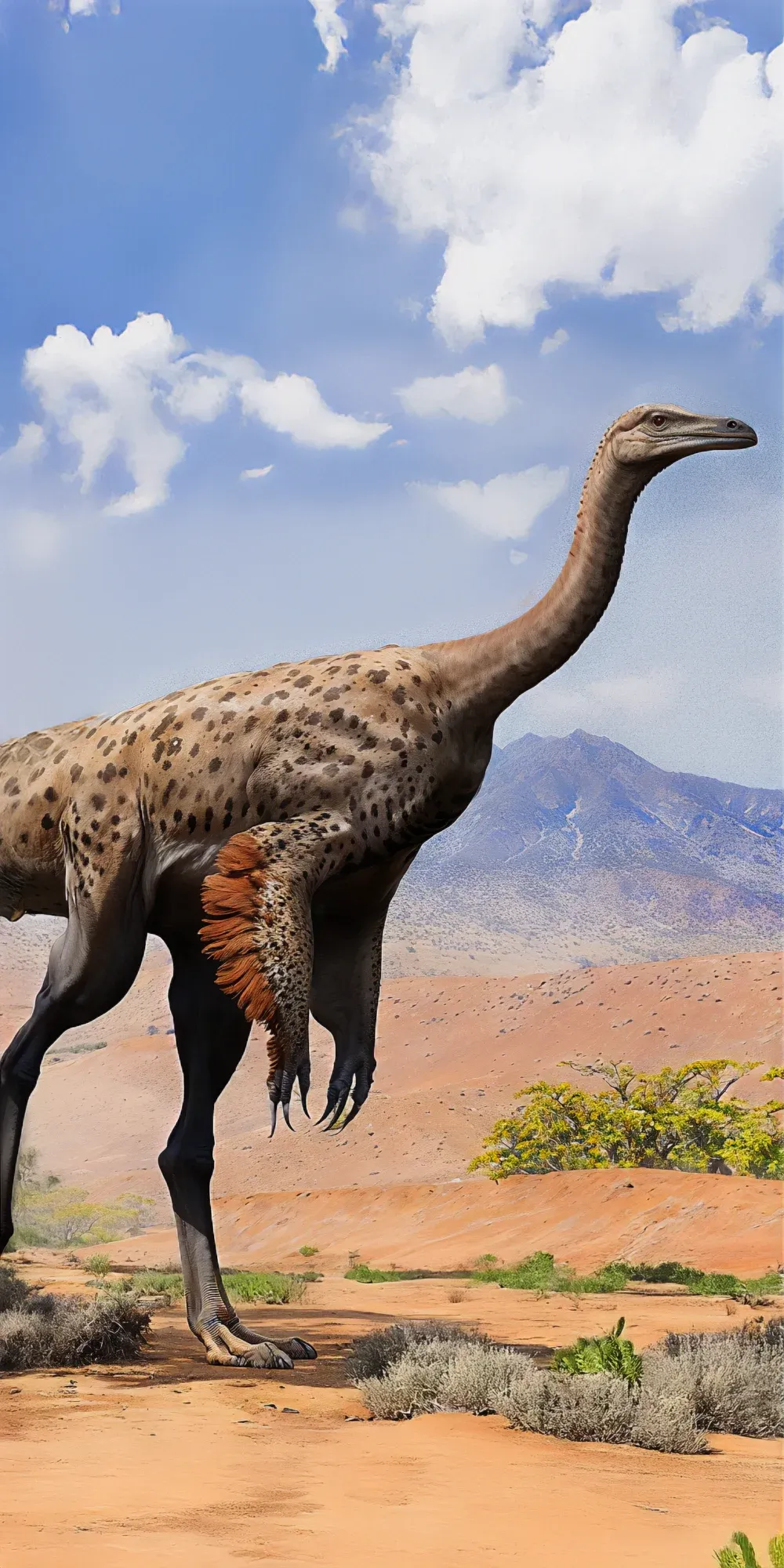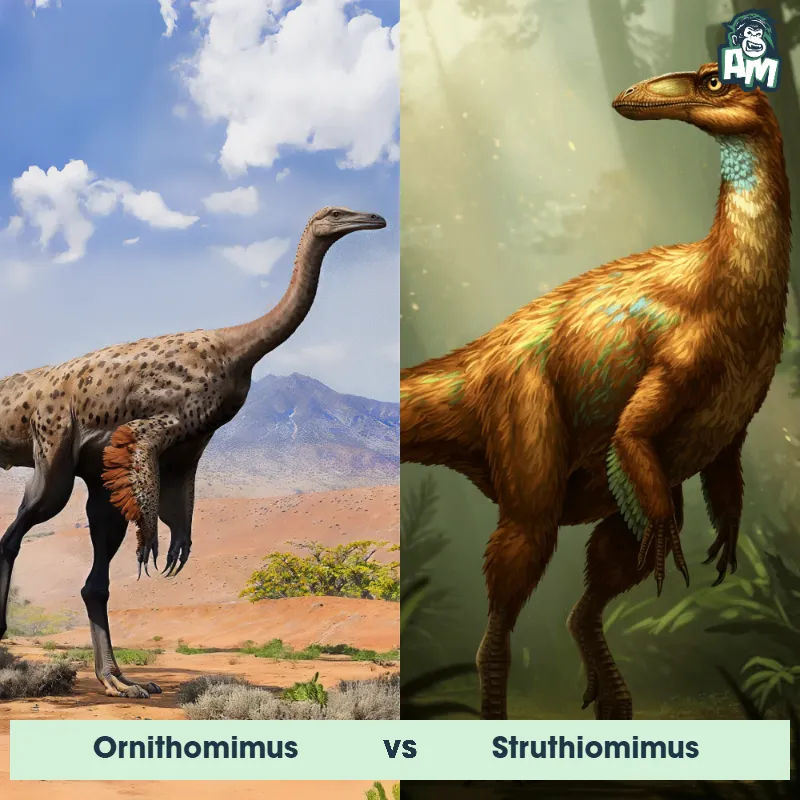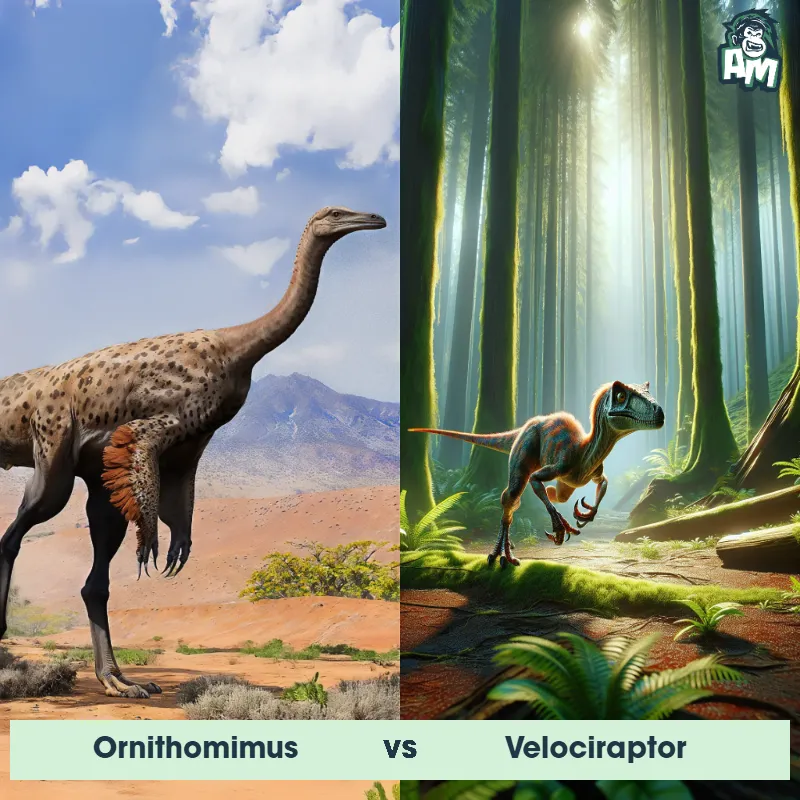The Ornithomimus
The Ornithomimus, also known as the "bird mimic," was a dinosaur that lived during the Late Cretaceous period. It was characterized by its long legs, slender body, and ostrich-like appearance, reaching lengths of up to 13 feet. With toothless beaks and sharp claws, Ornithomimus likely fed on small animals and plants.

| Ornithomimus | |
|---|---|
| Size | Around 12 feet tall (3.7 meters) |
| Weight | Approximately 330 pounds (150 kilograms) |
| Speed | 35 mph (56 km/h) |
| Key Strength | Speed and agility |
| Biggest Weakness | Lack of strong defense mechanisms |
| Scientific Name | Ornithomimus |
| Family | Ornithomimidae |
| Habitat | Open plains and forests |
| Geography | North America |
| Diet | Carnivorous, primarily hunted small animals and insects |
| Lifespan | 5 years - 8 years |

The Ornithomimus
The Ornithomimus, also known as the "bird mimic," was a dinosaur that lived during the Late Cretaceous period. It was characterized by its long legs, slender body, and ostrich-like appearance, reaching lengths of up to 13 feet. With toothless beaks and sharp claws, Ornithomimus likely fed on small animals and plants.
Fun Fact: Ornithomimus had long arms with three-fingered hands, making it one of the few dinosaurs known to have possessed feathers.
| Ornithomimus | |
|---|---|
| Size | Around 12 feet tall (3.7 meters) |
| Weight | Approximately 330 pounds (150 kilograms) |
| Speed | 35 mph (56 km/h) |
| Key Strength | Speed and agility |
| Biggest Weakness | Lack of strong defense mechanisms |
| Scientific Name | Ornithomimus |
| Family | Ornithomimidae |
| Habitat | Open plains and forests |
| Geography | North America |
| Diet | Carnivorous, primarily hunted small animals and insects |
| Lifespan | 5 years - 8 years |
Ornithomimus Matchups
We use AI to simulate matchups between the Ornithomimus and other animals. Our simulation considers size, strength, and natural predatory behaviors to determine the most likely outcome.

Can't find the Matchup you want?
Create Your Own MatchupOrnithomimus: Diet, Predators, Aggression, and Defensive Behaviors
What did Ornithomimus eat?
Ornithomimus were omnivores, primarily feeding on a diet consisting of small animals such as insects, lizards, and small mammals. They also supplemented their diet with fruits, seeds, and plants.
Did Ornithomimus have any predators?
Yes, Ornithomimus had various predators during the late Cretaceous period, including large carnivorous dinosaurs such as Tyrannosaurus rex and Dromaeosaurus. These predators posed a significant threat to Ornithomimus populations.
Were Ornithomimus aggressive?
Ornithomimus were generally not aggressive animals. They were known to be swift and agile runners, using their speed to escape from potential threats rather than engaging in aggressive behavior.
Did Ornithomimus fight?
Ornithomimus were not known for engaging in physical fights with other animals. Their primary defense mechanism was their speed and agility, allowing them to evade potential confrontations rather than engaging in direct combat.
How did Ornithomimus defend themselves?
Ornithomimus relied on their speed and agility as their primary means of defense. When threatened, they were able to quickly outrun predators or potential threats, using their long legs and lightweight bodies to escape danger.
What was the biggest weakness of Ornithomimus in a fight?
The biggest weakness of Ornithomimus in a fight was their relatively small size and lack of physical strength compared to larger predators. Despite their speed and agility, they may have struggled to defend themselves against larger, more powerful predators in a direct confrontation.
Fun Fact: Despite its bird-like features, Ornithomimus was a fast and agile runner, possibly reaching speeds of up to 40 miles per hour.
Fun Fact: The name Ornithomimus means "bird mimic," reflecting its bird-like characteristics such as its long legs and beak.












